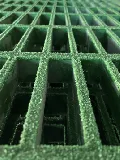loading...
- No. 9, Xingyuan South Street, Dongwaihuan Road, Zaoqiang County, Hengshui, Hebei, China
- admin@zjcomposites.com
- +86 15097380338
- Welcome to visit our website!
frp filter vessel
Understanding FRP Filter Vessels An Essential Component in Water Treatment
In today’s world, where water scarcity and pollution have become significant challenges, effective water treatment systems are more important than ever. One of the vital components in a water treatment process is the filter vessel, particularly the Fiber Reinforced Plastics (FRP) filter vessel. This cutting-edge technology has revolutionized the filtration process across various industries, ensuring clean and safe water for both industrial and domestic uses.
What is an FRP Filter Vessel?
FRP, or Fiber Reinforced Plastic, is a composite material made from a polymer matrix reinforced with fibers. The most commonly used fibers are glass fibers, which provide strength and durability while being lightweight. An FRP filter vessel is designed to house filtration media that removes impurities from water through various physical and chemical processes.
Unlike traditional metal containers, FRP filter vessels offer significant advantages, including resistance to corrosion, lightweight properties, and ease of maintenance. These characteristics make FRP filter vessels ideal for various applications, especially in harsh environments where conventional materials may fail.
Advantages of Using FRP Filter Vessels
1. Corrosion Resistance One of the most notable benefits of FRP filter vessels is their resistance to corrosion. Unlike steel or aluminum vessels that can degrade over time due to exposure to water and chemicals, FRP vessels are constructed to withstand harsh environments without succumbing to rust or corrosion. This quality extends the lifespan of the vessel and reduces overall maintenance costs.
2. Lightweight Design FRP filter vessels are significantly lighter than their metal counterparts. This lightweight nature simplifies transportation and installation, allowing for easier handling on-site. In many instances, this can lead to reduced structural requirements and lower construction costs for treatment plants.
3. Customizability FRP vessels can be customized to meet specific operational needs. Manufacturers can adjust the dimensions, shapes, and internal configurations to accommodate various filtration media, ensuring that the vessel is tailored to the application at hand.
frp filter vessel

4. Cost-Effectiveness While the initial investment in FRP technology can be higher than traditional materials, the long-term savings in maintenance, energy efficiency, and replacement costs can make them a more cost-effective solution over time.
Applications of FRP Filter Vessels
FRP filter vessels are utilized across a range of sectors, including drinking water treatment, wastewater management, and industrial processes. They play a vital role in removing sediments, suspended solids, and other contaminants from water.
In drinking water treatment plants, FRP filter vessels ensure that water meets health and safety standards before it is distributed to consumers. In industrial applications, these vessels are employed in processes such as cooling water treatment, chemical processing, and even aquaculture, where maintaining water quality is critical.
Installation and Maintenance
The installation of FRP filter vessels is typically straightforward due to their lightweight design. However, it is crucial to follow the manufacturer's guidelines to ensure proper operation. Maintenance involves regular inspections to check for any signs of wear, leaks, or damage. The filtration media within the vessel may also require periodic replacement or cleaning, depending on the specific application and water quality demands.
Conclusion
In conclusion, FRP filter vessels are an essential component in modern water treatment systems. Their unique properties, including corrosion resistance, lightweight design, and customizability, make them a preferred choice for many industries facing water quality challenges. As the global demand for clean water continues to grow, the importance of effective filtration solutions like FRP filter vessels will only increase. Investing in these advanced technologies is a step toward ensuring a sustainable and safe water supply for future generations. By understanding their benefits and applications, industries can make informed decisions that contribute to better environmental practices and public health.
-
The Rise of FRP Profiles: Strong, Lightweight, and Built to LastNewsJul.14,2025
-
SMC Panel Tanks: A Modern Water Storage Solution for All EnvironmentsNewsJul.14,2025
-
GRP Grating: A Modern Solution for Safe and Durable Access SystemsNewsJul.14,2025
-
Galvanized Steel Water Tanks: Durable, Reliable, and Ready for UseNewsJul.14,2025
-
FRP Mini Mesh Grating: The Safer, Smarter Flooring SolutionNewsJul.14,2025
-
Exploring FRP Vessels: Durable Solutions for Modern Fluid HandlingNewsJul.14,2025
-
GRP Structures: The Future of Lightweight, High-Performance EngineeringNewsJun.20,2025
